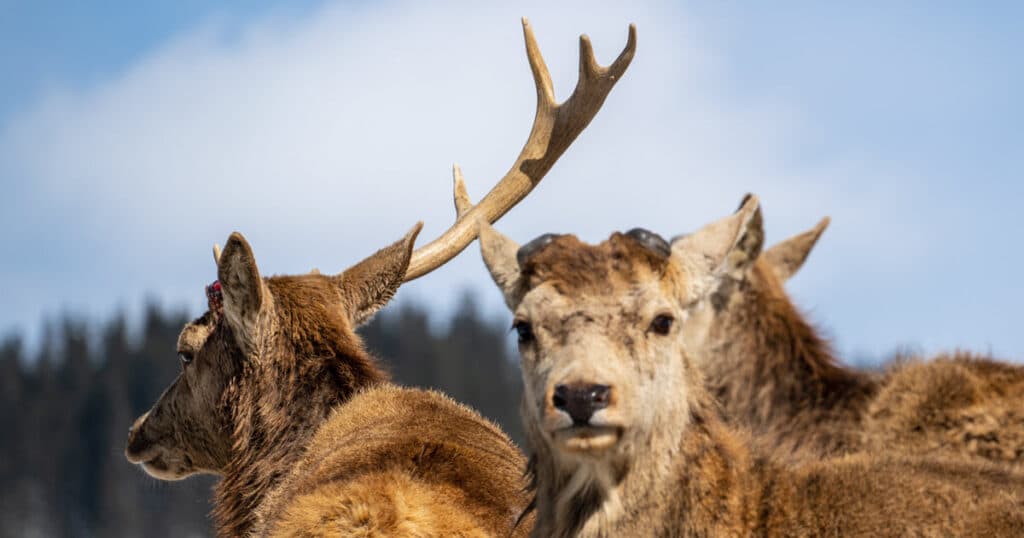All deer shed their antlers as part of a natural process that corresponds to their reproductive cycle. Deer do not have to try to shed their antlers – the antlers shed themselves. But how do deer shed antlers? We’ll answer that question in this article.
You may have wondered why deer antlers can look different depending on the season. Or maybe you’ve stumbled across a set of antlers in the woods and wondered why they’re there but no bones are present.
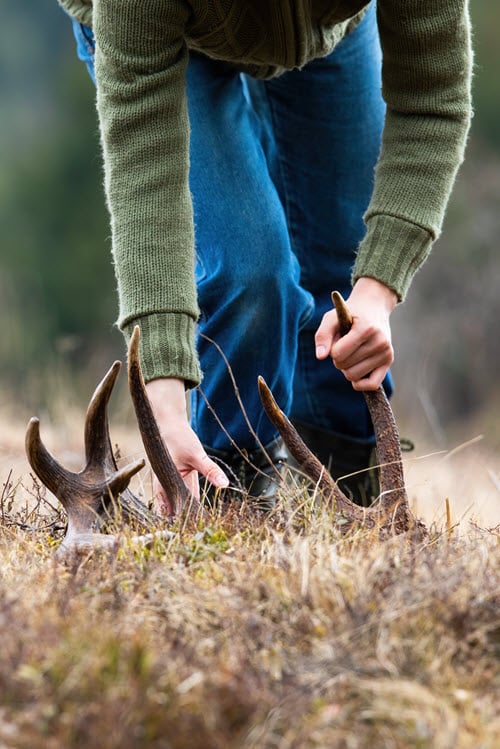
Well, today we’ll share some interesting facts about antlers that will shed (pun intended) light on your questions.
Let’s start with the basics:
How Deer Shed Antlers
Table of Contents
ToggleDeer grow a new set of antlers every year. When that living tissue hardens for combat during their annual mating season (or rut), blood flow to their antlers ceases. At this time the antler is no longer a living part of the deer’s body. It will eventually fall off (or be shed) at the conclusion of the mating season. Many deer accelerate the process by rubbing their antlers on branches and trees.
Do All Deer Shed Antlers?
No, not all deer shed antlers, but all deer that have antlers shed them. In most species of deer, only male deer have antlers. So in most cases, female deer do not shed antlers because they do not have them.
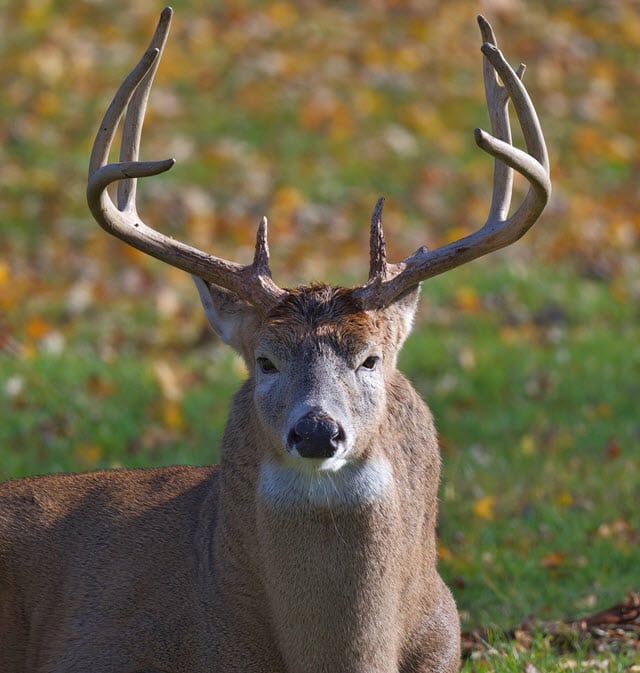
The exception is the Reindeer – the only species of deer in which females have antlers.
Most male deer only develop antlers when they are fully grown. In some species, such as the Red Deer, the antlers grow in size every year. This means a younger deer will have shorter antlers than a more mature deer.
Since only mature deer have antlers, baby deer do not shed them.
How Do Antlers Shed?
To understand how antlers shed, it’s important to understand how they grow. Antlers are an extension of the deer’s skull and are made of calcium and phosphorous. Thus, antlers are bone, and they are some of the fastest-growing bones on the planet.
While antlers are growing, they often have a velvety texture. You’ll often notice that shorter antlers have a fuzzier look than longer ones. This unique texture comes from the rapid blood flow from the head through the antler.
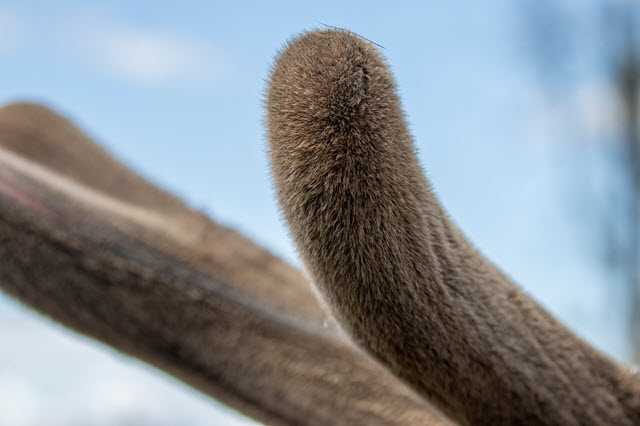
As the antlers grow to their full length, they harden to something that resembles bone.
At this point, there will be no more blood flow between the antlers and the rest of the body, and the antler’s velvet will begin to wear down in a gory process called velvet shedding. Some deer will rub their heads against trees or rocks to speed up this process.
Is It Painful for Deer to Shed Antlers?
No, it does not hurt when deer shed their antlers. By the time deer are shedding their antlers, the blood flow between the antlers and the rest of the body has stopped. The antlers are essentially separate from the rest of the skull.
Of course, it’s impossible for us to ask deer how they are feeling. There is no way to tell for sure whether or not deer are experiencing pain when they shed their antlers. They do seem to experience some discomfort when they are shedding the velvet from their antlers.
Do Deer Bleed When They Shed Their Antlers?
There can be some blood when the antlers are fully shed, but it is more common that the antlers will bleed when the velvet is being shed.
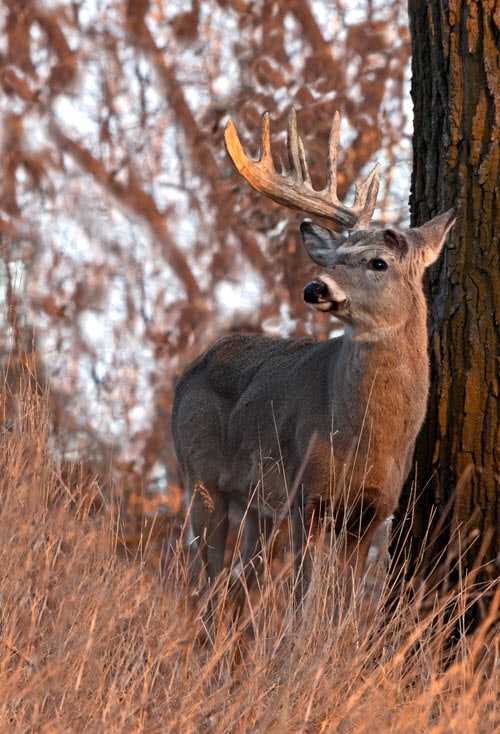
Velvet is shed once the antlers are fully grown, allowing for a tougher surface, which is important when male deer go to spar during the rutting season.
When the velvet sheds, the antlers can still have blood flow, and the velvet shedding can lead to bleeding, which will be itchy. This is why deer rub their heads against trees to get rid of the velvet.
Do Deer Shed Their Antlers Every Year?
Yes, deer shed their antlers every year. The growth of antlers corresponds with the mating season. When the mating season is complete, deer will shed their antlers so that they can regrow them in the spring before the rutting period (which is when the male deer compete for female mates).
During the rutting period, deer will fight one another with their antlers, so it is important that the antlers are at their full length during this period.
What Happens to Deer Antlers When They Fall Off?
Like all biological matter, deer antlers will eventually decompose, providing nutrient for the soil that will in turn provide food again for the deer. However, some animals will eat fallen antlers since they are an excellent source of nutrition.
Some species of deer, such as moose, will even eat their own antlers once they have been shed.
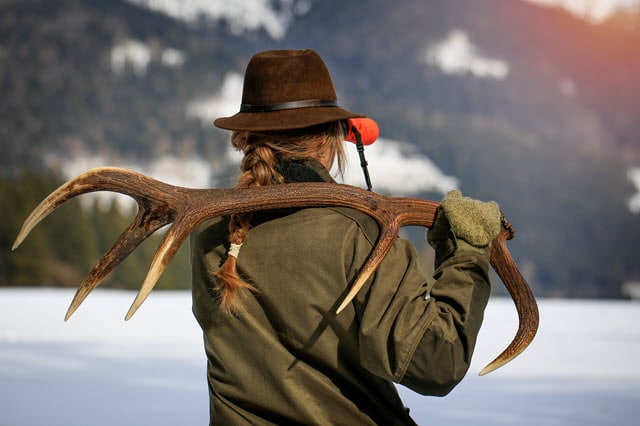
If you’re walking through the forest in winter, you might be lucky enough to find some antlers to bring back home.
Is Antler Shedding the Same as Horning?
No, antler shedding and horning are not the same thing.
First of all, antlers and horns are not the same thing.
Antlers are grown by deer, whereas horns are grown by animals in the bovine family, such as goats. Horns will often be grown by male and females, and unlike antlers, which are shed every year, horns remain with the animal for its entire life.
Horns will also continue to grow for the animal’s entire life, whereas some deer will always roughly have the same size antlers while other deer antlers may increase in size each year.
If you look at an antler and a horn side by side, you’ll be able to tell the differences fairly quickly, especially if the antlers are still covered in velvet. First, horns have a different shape and texture than antlers, which are more bone-like.
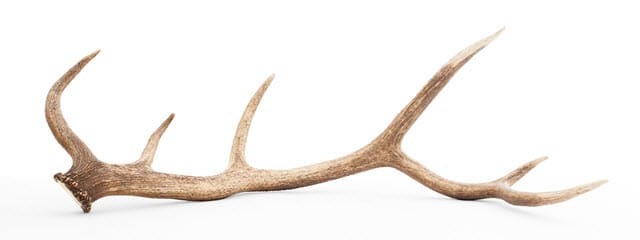
Horning is when a horn is removed from an animal with a horn, which is often a painful experience for the animal. This is because horns are meant to last for an animal’s entire lifetime, whereas antlers are only meant to last for the season.
What Are Horns Used For?
Horns are primarily used for protection, but they can also be used for sparring between males.
This contrasts with antlers, which are used to attract mates and ward off competition during the rutting period.
That said, humans often use horns and antlers for similar purposes. They can serve as decorations or mounts on the wall, or they can be carved to make furniture or other useful objects.
Final Thoughts About How Deer Shed Antlers
Antler shedding is a natural process that all deer with antlers undergo. It may seem painful, but it does not harm the deer and is an important part of their annual reproductive cycle.
Shedding is also good for the ecosystem as it provides nutrients for smaller animals, the ground, and in turn food for other animals.

